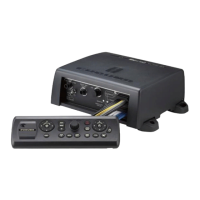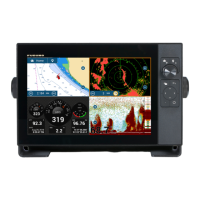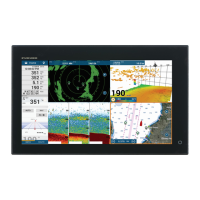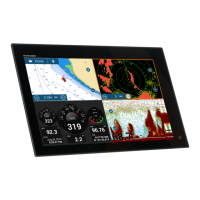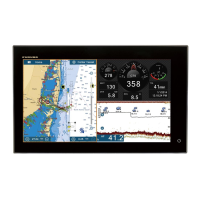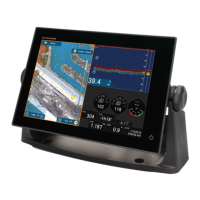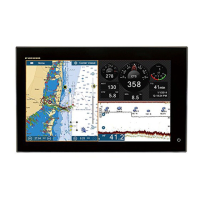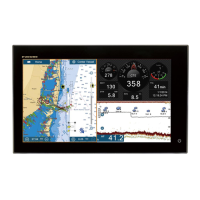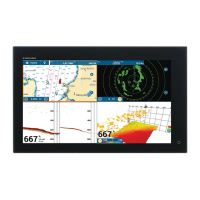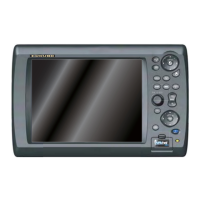6. RADAR
6-24
Shadow sector
Funnels, stacks, masts, or derricks in the path of the antenna stop the radar beam. If
the angle opposite the antenna is more than one or two degrees, a sector or shadow
sector appears on the screen. Targets are not displayed within the sector.
Sidelobe echoes
Each time the radar transmits, some radiation leaves on each side of the beam. This
lost energy has the name "sidelobes." If a target is detected by both the sidelobes and
the mainlobe, the sidelobe echoes can appear at both sides of the true echo at the
same range. Sidelobes normally show only on short ranges and from strong targets.
You can reduce sidelobes if you reduce the gain, or correctly adjust the sea clutter.
6.29.2 Search And Rescue Transponder (SART), Racon
Note: With the DRS4D-NXT, RACON (RAdar beaCON) and SART (Search And Res-
cue Transponder) within 0.5 to 1.5 NM (Range dependant) can be displayed. The sig-
nal from RACON and SART will be shown as a line.
SART
A ship in distress uses a radar-SART to show a series of dots on the radar display of
nearby ships to indicate distress. A SART transmits when it receives a radar pulse
from any X-Band (3 cm) radar within a range of approximately 8 nm. When a SART
receives a radar pulse, the SART transmits a response across all the radar frequency
band.
Radar position
Large ship
Wharf and its echo
Shadow sector
occurs because
wharf is hidden
behind ship.
Radar position
Wharf and its echo
Shadow sector occurs
because obstruction
(like mast) is in path of
radar beam.
Size of blind sector depends on
size of obstruction and range.
Mainlobe (beam)
Sidelobe Sidelobe
Antenna
True target
False echoes by sidelobes
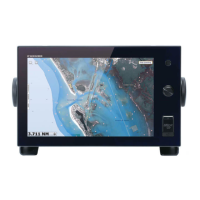
